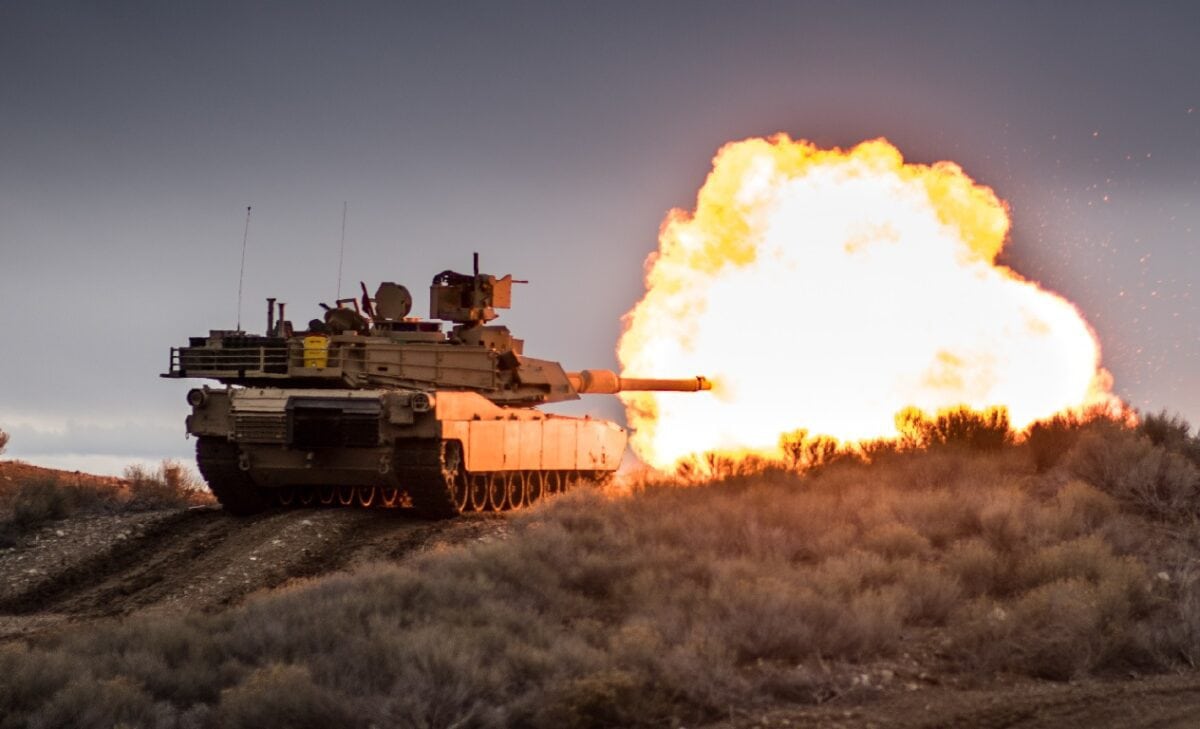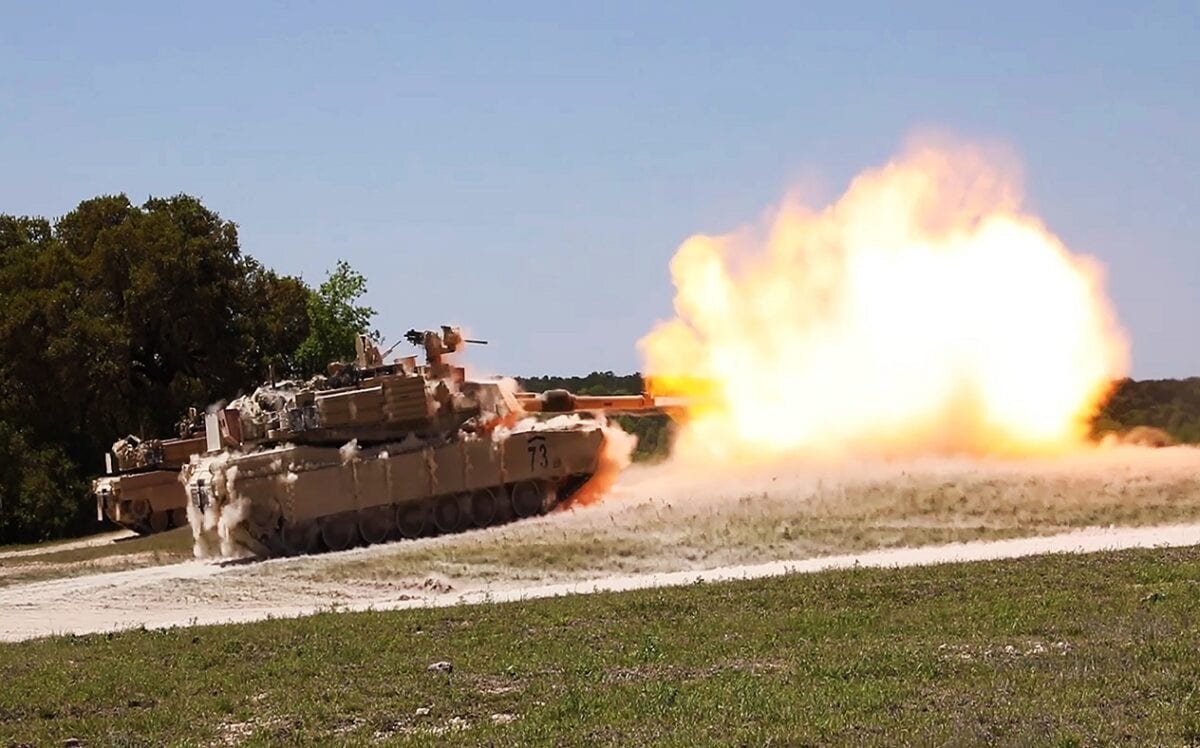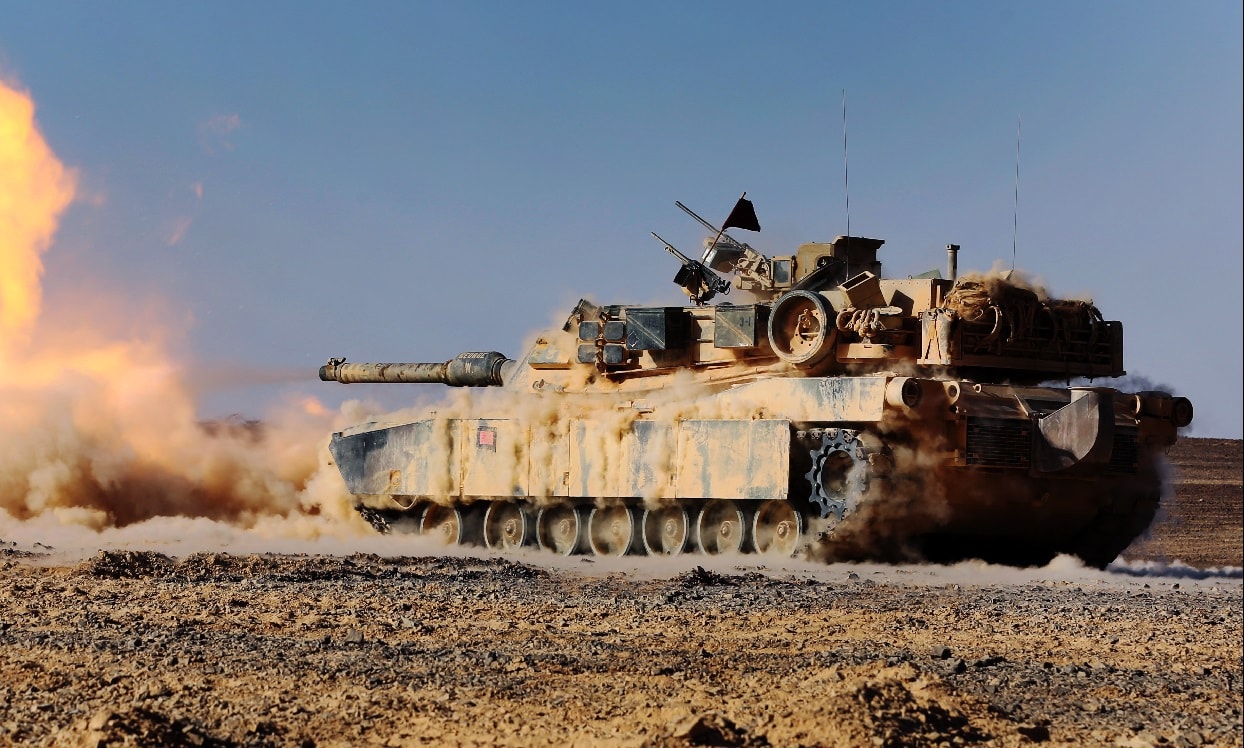At nearly 62 metric tons, the M1 Abrams is one of the heaviest tanks ever produced. The hulking Abrams was introduced in 1980, just in time for decades and decades of Middle Eastern conflict. The Abrams, which was jammed with novel features, has performed admirably as the primary battle tank of the United States Army.
Leading the Third-Generation Tank Charge
The M1 Abrams is a third-generation tank. Third-generation tanks began appearing amongst affluent nations in the 70s and 80s – even as poorer nations continued developing second-generation tanks well into the 21st century. For example, the Soviet Union, United States, and United Kingdom all had third-generation tanks by the mid 80s, whereas Ukraine and Bangladesh were still pumping out second-generation models during Obama’s second term. Third-generation tanks are known for their composite armor and their computer stabilized fire control systems – advanced firing systems that enable firing on the move with accuracy up to 2,000 meters.
When the Abrams first debuted, it introduced innovative, then-futuristic features to tank warfare – which is why the tank is still relevant today, after four decades in the field. The Abrams is one of the only tanks in the world confirmed to use Chobham composite armor, the construction details of which remain a secret, several decades after its first design.
Generally speaking, Chobham armor features ceramic tiles encased within a metal framework, joined to a backing plate with multiple elastic layers. The ceramics used are extremely hard, in effect offering improved resistance against the tank-killing-shaped charges known for effectively penetrating lesser armor systems. In addition to being so hard, Chobham armor is also quite brittle. The brittleness is a defensive feature, too, for when a projectile does penetrate the armor, the entrance channel is not smooth (as it would be with metal armor). Instead, the ceramic tile leaves a ragged entrance channel, which in turn causes asymmetrical pressures on the penetrating charge that typically causes the charge to fail. Chobham armor has proven wonderfully effective in the field. Few tanks with Chobham armor have ever been destroyed.
Abrams Has Firepower
The M1 Abrams uses an M256A1 120mm smoothbore gun, a German design courtesy of Rheinmetall AG. The M256A1 fires a variety of rounds. The primary round is the depleted uranium M829, an American-made, armor-piercing, fin-stabilized, discarding sabot (APFSDS) tank round.
The M829 comes in four variants. The A1 variant was nicknamed the “Silver Bullet” during Desert Storm, where the round proved devastating to Iraq’s Soviet-made armor vehicles. The A3 variant was also effective, especially against modern ERA-outfitted tanks. In fact, the A3 round was so effective, that the Russian army created new armor – Relikt – as a countermeasure. Supposedly, Relikt is Russia’s most sophisticated tank armor ever. In addition to the 120mm main gun, the M1 Abrams also houses three machine guns with the option for a fourth: a .50 caliber, and two 7.62 mm M240s. When needed, a second .50 caliber can be mounted directly above the main gun.
Perhaps the M1 Abrams’ most brilliant feature is its fire-control computer. The Abrams’ fire-control computer relies on various points of data to perform three calculations needed to successfully hit a target: lead angle, ammunition type, and range to the target. These calculations are made using a laser rangefinder, crosswind sensor, boresight alignment data, air temperature, and barometric pressure. The computer even accounts for barrel heating, caused by either previous firing or sunlight exposure. The computer refreshes its readings every thirty seconds. The system is sophisticated – and the result is an accurate, deadly firing system.

Tankers with Alpha Company, 2nd Battalion, 116th Cavalry Brigade Combat Team, conducts platoon live-fire gunnery qualification Feb. 4, 2019, at the Orchard Combat Training Center. The Idaho Army National Guard Soldiers are preparing for the 116th Cavalry Brigade Combat Team’s upcoming rotation at the National Training Center, Fort Irwin, Calif., later this year. Note: This is an example of an M1 Abrams tank firing, not a STAFF round demonstration.

A M1A2 SEPV3 Abrams Tank fires at multiple range targets during a range warfighter exercise, April 11, 2021, Fort Hood, Texas. The visit with foreign allies allows the U.S. Army to boost interoperability of staff members and warfighting capabilities with the M1A2 SEPv3 Abrams Tank. (U.S. Army photo by Sgt. Melissa N. Lessard)
To top it all off, the Abrams is mobile. Very mobile. The Honeywell AGT1500 multifuel gas turbine engine is capable of generating 1,500 horsepower at 10,000 revolutions per minute. The engine has a governor, capping speeds at 45 miles per hour. When the governor is removed, the 60-ton tank can hit 60 miles per hour.
The M1 Abrams, having proven itself in the deserts of the Middle East, remains in service today. A new variant, the M1A2v4 is in the testing phase and should enter service soon. Expect the Abrams to remain the workhorse of the US Army for decades to come.
Harrison Kass is a Senior Defense Editor at 19FortyFive. An attorney, pilot, guitarist, and minor pro hockey player, he joined the US Air Force as a Pilot Trainee but was medically discharged. Harrison has degrees from Lake Forest College, the University of Oregon, and New York University. He lives in Oregon and regularly listens to Dokken.

